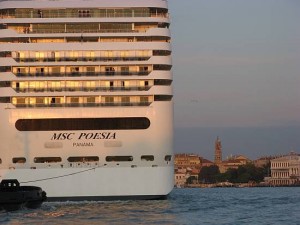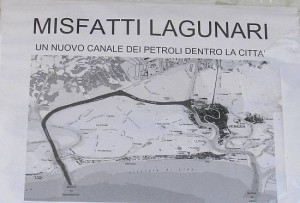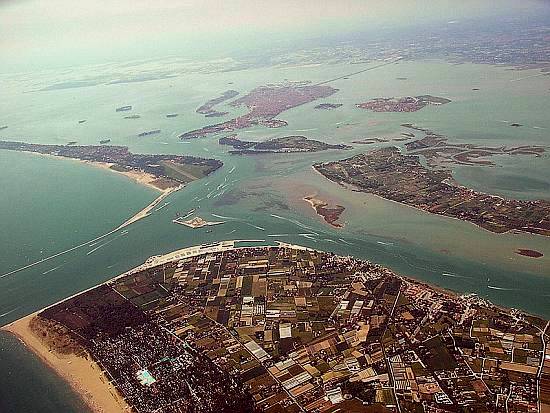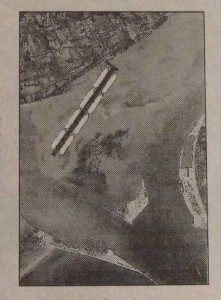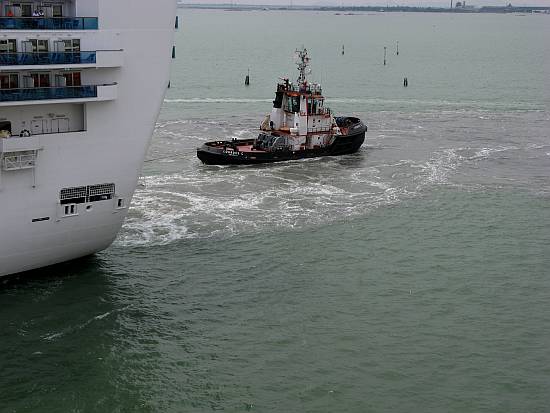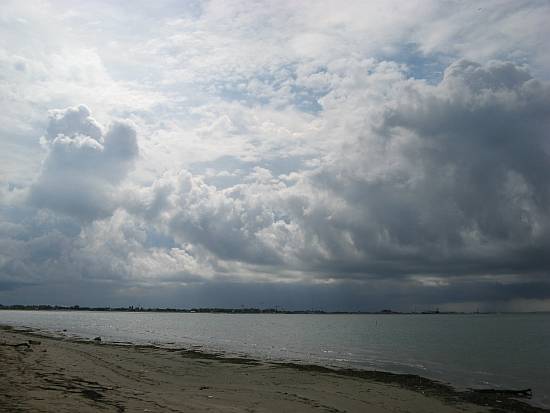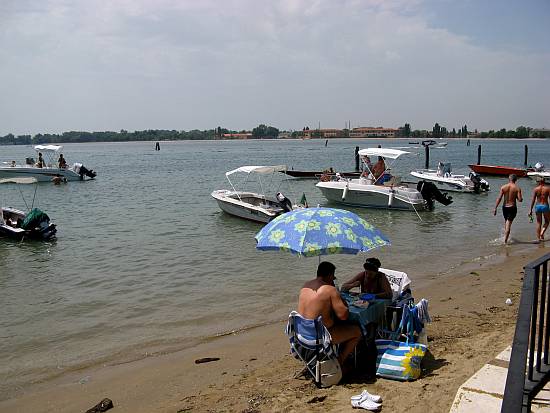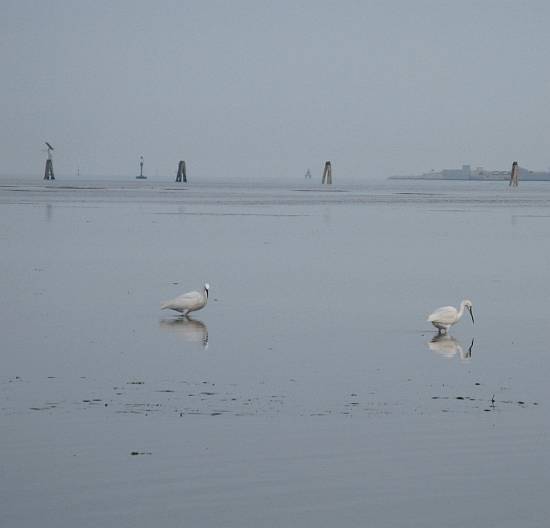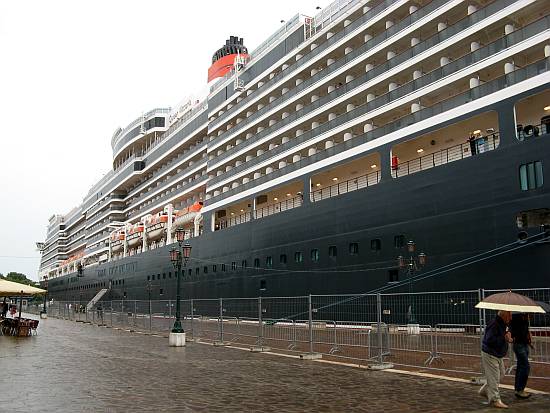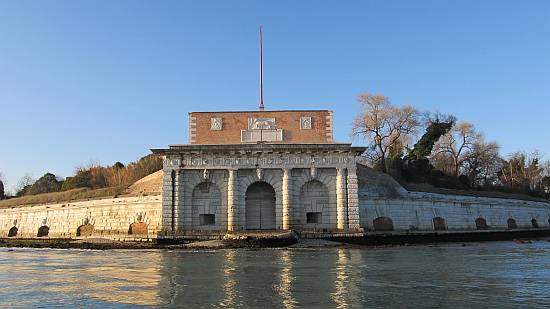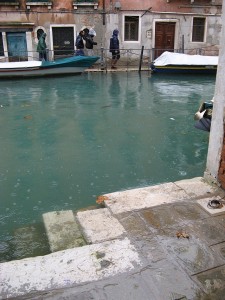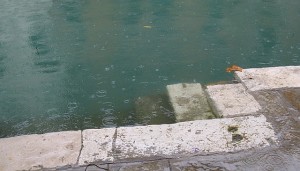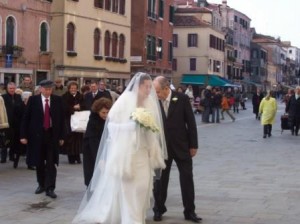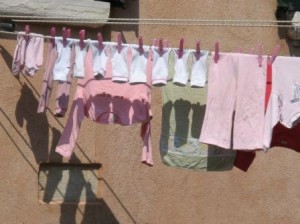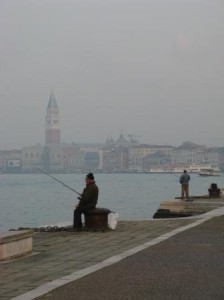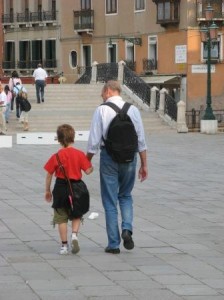I don’t know why they call it news — here, at least, certain things happen over and over to the point where they ought to be called olds.
Some random examples of olds would be the periodic blitz of the Guardia di Finanza against the illegal clam fishermen; the periodic blitz of the Carabinieri (or vigili, or Guardia di Finanza) against the illegal handbag sellers, with concomitant confiscation of their unfathomable supply of counterfeit goods; the periodic blitz (hm, we haven’t had one of those for a while) of the aforementioned forces of public order against the perpetrators of motondoso; and the ceaseless moaning of the city, like a raccoon caught in a foothold trap, that “no ghe xe schei,”
Two headlines this week are worth reporting, if only because we haven’t seen them for a while — though that does not mitigate the “here we go again” factor.
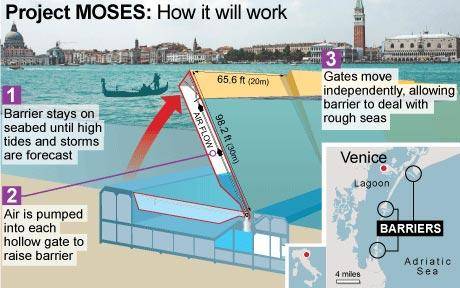
“Opere infinite Il Mose slitta di due anni” (Infinite works MOSE slips by two years).
MOSE: Sometimes friends and/or visitors inquire as to the progress of the floodgate project which is going to save Venice from acqua alta, so the builders claim. Despite incessant statements by interested parties giving the impression that high water is virtually a daily scourge, I should mention that I didn’t put on my boots even once last season (by which I mean acqua-alta-season, running from September to April). Not once. Yes, there was some water in the Piazza San Marco a few times. As usual, it went away after a few hours.
This headline carries no surprises but only some new information. First of all, construction projects everywhere are born behind schedule. So we are not amazed to read that the project isn’t going to be finished in 2014, as claimed a few years ago when 2014 was also a shifted-forward date. They say it’s going to be finished on December 31, 2016.
Bear in mind that the construction of the Calatrava Bridge took six years to complete (original projection: one and a half years), and it’s a simple span a mere 80 meters (262 feet) long. So looking at MOSE, if the term “Great Pyramid of Khufu” comes to mind, it’s understandable. (For the record, the pyramid was built in 20 years. MOSE was begun in 2003, but considering how far construction projects tend to expand into the future and into the budget, we may be seeing a rival for the record in the making.)
The basic reason for the change in date is that the money is running out. You may have noticed that money is not as plentiful as it once was — say, back in 2003, or even in 2006, when the government, under Prime Minister Romano Prodi, voted colossal quantities of cash for this undertaking. In my view, this was an investment, not in the future of Venice, but in the future of the investors themselves, seeing that it will require spending money for maintenance for the rest of eternity.
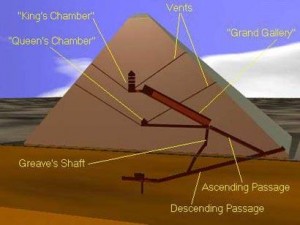
The Berlusconi government was less enthusiastic, but the funding continued. But now it’s different. The current government, headed by economist Mario Monti, is attempting to keep the entire country from going to the bottom with all hands aboard, so you can understand why paying for MOSE might not be seen as an urgent national priority. Especially since the current estimate on how much it will cost to finish this little adventure is 1,200 million euros ($1,451,890,000). There might be other things that cost more, but those other things might be more important to more people. Anyway, this number will also change.
Vu’ cumpra’ in fuga dai vigili travolgono due turiste (“Illegal handbag-sellers fleeing the police knock over two women tourists,” reported Monday, July 23); Blitz antiabusivi, agente travolto (“Blitz against the illegal handbag sellers, an agent knocked down,” reported Tuesday, July 24).
Nothing new here except the quantity of victims.
Translation: “”Vu’ cumpra'” is the African-accent rendition of “Vuoi comprare?” or “Do you want to buy?” It has become the generic nickname for the entire category. “Abusivi” is a general term which could be applied to anyone doing something without a license which requires a license. (Hence drug dealers or prostitutes, for example, wouldn’t be called “abusivi.”)
In Venetian terms, an abusivo could be a clam fishermen who digs mollusks out of season, in forbidden areas, in excessive quantities. It can also describe the new self-appointed porters, mostly Eastern European men, who semi-threaten tourists in order to carry their luggage over the Calatrava Bridge for money.
But it most often is used to describe the street-sellers of counterfeit handbags and other objects such as sunglasses and tiny camera tripods. There are so many of them in critical tourist areas (Riva degli Schiavoni, Calle Larga XX Marzo, Strada Nuova) that the undermanned police forces make only sporadic efforts to punish them. They arrest whomever they can catch, they take their goods, they might even take them to court, briefly. Next day — sorry, next hour — everything has returned to exactly the way it was.
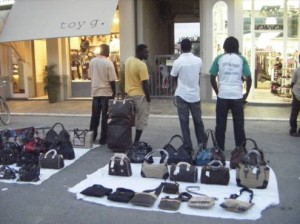
The only reason the abusivi might deserve a place in the Gazzettino would be either the assault by the police, or an unusually large amount of merchandise taken away, or physical harm to whatever unfortunate human was in their way as they were fleeing at top speed down narrow streets and around corners. In this case, two of the above.
Running into people, I note, is a good thing for the fleeing abusivi because it means that at least some of the pursuing officers have to stop to look after the injured person.
On Monday, July 23, a surprise “attack” on the sellers in the Calle Larga XX Marzo was made around 7:00 PM, when the shops begin to close and the street begins to be lined with bag-sellers. This action was a result of a petition signed by the merchants who say that potential customers are afraid to pass the vu’ cumpra’ to enter their stores. These petitions are also perennial.
The agents blocked all the exits, so to speak, and swooped down. They carried away some 400 items, mostly bags, a trifling amount, as well as 15 sellers, half of whom were clandestine (i.e., here without permission) and some of whom already had long, dense rap sheets on file. But some of the sellers fought back, particularly the one who violently pushed one agent who fell to the pavement.
Around 11:00 PM last Saturday night, on the bridge by the Danieli Hotel, a similar scene involved a woman bowled over by a man running away loaded with his bulky bag of stuff. No major harm done to her; it appears that the man got away.
Sunday afternoon around 3:00 PM in Campo San Zulian, the same scenario: Running man ricochets off woman. No major harm here either, but it’s not much more attractive to watch than it is to experience.
You may ask why this situation persists. Everyone wants to know the answer to this question. If I ever find out, I will immediately let you know. The answer might even be published in the oldspaper.

